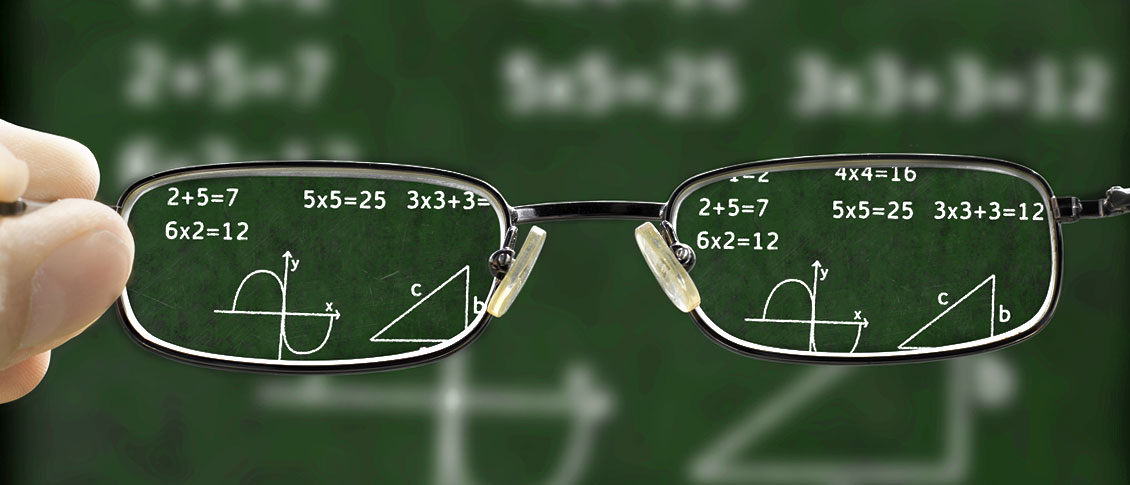
I recently received a text from an out-of-state relative, asking if he should have his college-age daughter put in progressive lenses to help delay progression of her nearsightedness.
I told them that there wasn’t good evidence that doing that would help, and since progressive lenses generally cost about three times as much as single-vision lenses that he shouldn’t do it.
The optometrist they were seeing at the time insisted I was wrong and strongly encouraged them to do it. Included in that exchange was a comment by their optometrist that I should stick to surgery and let her handle refractions!!
Based on that exchange I decided to do some homework and make sure I wasn’t missing something. There have been multiple interventions tested over the years to help slow the progression of nearsightedness (myopia). Some have worked, some have not. Some that have worked have side effects that limit their usefulness. We will try and delve into several of these here.
Progressive Lenses
Let’s start with the intervention that got me into this review.
There have been multiple studies attempting to demonstrate a usefulness for progressive lenses in retarding the progression of myopia over time. Some have demonstrated statistically significant lessening of progression of myopia, but none demonstrated clinically significant differences.
What is the difference? In a large study, with hundreds of participants, you can often measure a statistically significant difference in outcomes without that difference having any clinical relevance.
That is what happens in this case. The most commonly cited study for the use of progressive lenses in retarding myopia is the COMET Study by Gwiazda et al. In this study there were 469 children ages 6-11 with myopia, to whom half were given standard single-vision lenses to correct their myopia and half were given +2.00 addition progressive lenses. The two groups were studied for three years. After three years the progressive glasses group was -1.28 diopters more near sighted and the single vision lens group was -1.48 diopters more nearsighted.
That was statistically significant but clinically irrelevant. Why clinically irrelevant? Because what we are trying to accomplish in retarding myopia is attempting to not have people progress to high myopia (greater than -5.00) because high myopia increases your risk for several significant eye diseases. An improvement of .2 diopters over 3 years is like the proverbial “spitting in the ocean,” it just doesn’t matter for the long-term health of your eyes. In fact, when we prescribe glasses or contacts we do it in .25 diopter steps, so after three years of buying much more expensive glasses and having to get used those glasses, which sometimes isn’t easy, the treated group was less nearsighted by an amount that is smaller than the smallest measurement we make in glasses. That is not clinically relevant.
Even the authors of the study state as their conclusion “The small magnitude of the effect does not warrant a change in clinical practice.” Therefore, if you or your children are offered this as a solution, your answer should be no thanks!
Atropine
Atropine is an eye drop that basically does two things - dilates your pupil and impairs your eyes’ ability to focus up close. It has been shown in various doses to slow myopia progression in multiple studies. The issue with atropine has been the side effects. It dilates your pupils, which leads to some light sensitivity and may increase the eyes’ exposure to UV light and that could increase the risk of cataracts or macular degeneration much later in life.
It also causes some difficulty in focusing on near objects, especially with the distance corrective glasses on. Some children in the studies had enough near-task trouble that they needed to have reading glasses in addition to their distance glasses in order to function properly.
More recent studies on lower doses of atropine 0.01% (ATOM2) did produce clinically significant reduction in myopia progression with much lower side effects. Progression in myopia over two years on this dose was -0.49D, compared with the control group of intervention in ATOM1, which was -1.20D. That difference of .71 diopters in 2 years is clinically significant compared to the .2 diopters over 3 years in the Comet study. With this low of a dose of atropine there were very mild effects in pupil diameter and almost no effect on near visual acuity.
The use of low-dose atropine has been slow to catch on in the United States. There are several reasons for that, including that the ATOM studies were done in an Asian population, which may not generalize to the diverse U.S. population since Asians overall have a higher rate of high myopia.
Other issues are: no long-term data yet and it is an “off-label use” (not an approved indication by the U.S. Food and Drug Administration). It’s unclear how early to start the treatment, how long to keep it going, and if it is worth using in low myopia or should it be preserved for children who get into the higher degrees of myopia, such as -4.0 or greater.
A clear recommendation on low-dose atropine is harder to give. With the currently available information I would consider utilizing low-dose atropine if I thought a child had a high risk of ending up with high myopia. The risk factors I would consider using it in would be Asian descent, parents with high myopia (it does run in families) and significant myopia (-4.0 or greater) at a young age.
Ortho-K or Soft Bifocal Contacts
These are hard or gas permeable contact lenses worn overnight to flatten the central cornea to reduce the amount of myopia. Studies about slowing of myopia progression with Ortho-K generally demonstrate a decrease of myopic progression on average of about .3 diopters over two years compared to glasses – a slightly greater effect than progressive lenses but not as good low-dose atropine. Sleeping in contacts significantly increases the corneas’ susceptibility to bacterial infection, including corneal ulceration and, in my mind, the reduction in myopia is not worth the complications compared to the better effect and less severe side effects of low-dose atropine.
Soft bifocal contacts are worn during the day, not while sleeping, so their infection risk is lower. They have similar reduction of myopia progression rates as Ortho-K so they may be a slightly better option then Ortho-K in terms of complications. However, I have consistently found when using soft bifocal lenses in adults over 40 (for which the lenses were intended) that people often complain that the clarity of their vision for both distance and reading is just not as good as the vision with their glasses. This limits their usefulness, in my view.
More Time Spent Outdoors
There have been several studies that have shown decreases in myopia with more time spent outdoors. The effect has been somewhat small, and it has more of an effect on decreasing the incidence of myopia and less of an effect on decreasing progression once myopia is already there. This intervention is free and getting outside and increasing physical activity instead of sitting inside attached to a screen all the time carries many other health benefits. Even though for this effect is small for myopia progression it makes sense to try and encourage it.
Conclusion
Given the variety of potential intervention and their mild effects, which options should a parent take in regard to their children?
Recommending more time playing outside seems to be an easy one to suggest. It’s free with no significant side effects and although its prevention capabilities are mild there is no reason not to do this. So get off the screen and get outside!
Personally, the Ortho-K would not be something I would choose. I’ve seen enough corneal ulcers in patients who slept in their contact lenses for that to be a nonstarter for me. I don’t like the soft bifocal lenses because they do not produce the same level of clarity at either distance or near as their single-vision counterparts, so I would not want to subject my child to them for what seems like a very small benefit.
Progressive glasses do not have a clinically significant effect, are expensive, and are sometimes difficult to get used to wearing so I find no place for them even being in the discussion.
The one intervention, besides more time outdoors, mentioned in this blog that I personally would consider using on my children is the low-dose atropine. I would only recommend this if several criteria/risk factors were meet. The first would be a higher-than-average risk for myopia. The elevated risks for high myopia are Asian decent and family history, especially if one or both parents have high myopia. The second risk factor would be already being myopic at a young age. For me personally, it would have to be a child in the age groups these studies were done (generally from 5-13) and the degree of myopia would have to be -4.00 or more.
As I mentioned, almost every study in regards to prevention of progression in myopia are conducted on the age groups of 5-13 so there is no evidence that any of these interventions will work for children older than 13 or young adults so I would be very hesitant to utilize them on a child whose age is outside the study subject.
Article contributed by Dr. Brian Wnorowski, M.D.















